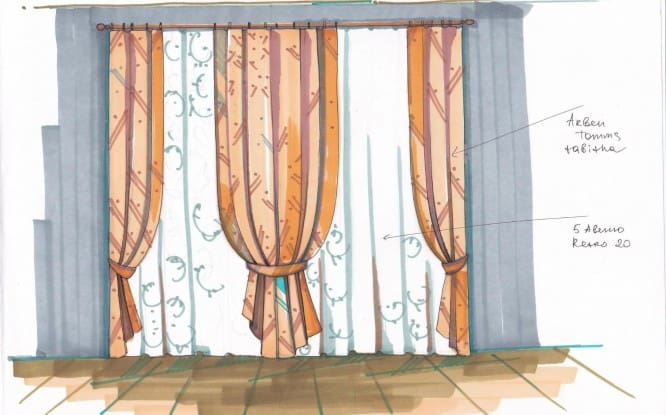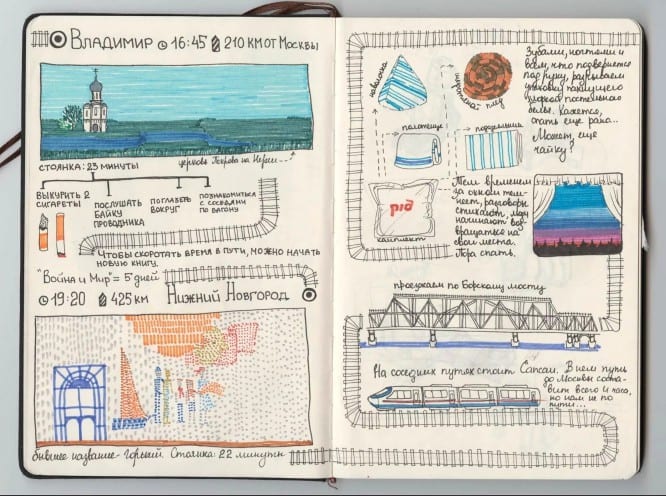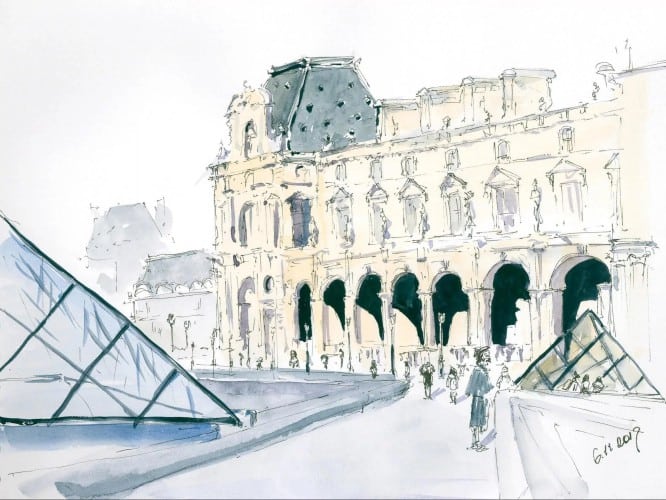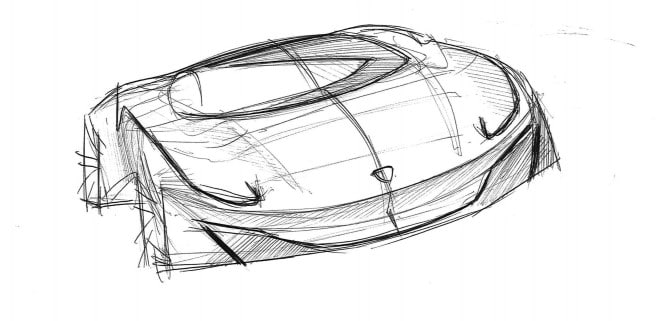Sketching as a quick way to get an idea across. Designer first steps
Sketching as a quick way to get an idea across. Designer first steps
Sketching is a technique that is widely used in the design process. It helps to quickly visualize ideas, coordinate them with the customer and minimize the risk of misunderstanding.
What are sketches, why are they needed
Sketches are quick sketches and visual notes that display images, ideas, and thoughts on paper. The word sketch itself is translated from English as “quick drawing”.
In sketching, speed is important, allowing you to concisely capture the outlines of objects and the general idea. You should not chase after a holistic artistic composition and elaborate details.
Sketches are used by people of different professions.
- Web designers make website prototypes on paper.
- Interior designers create room interiors from multiple angles in order to arrange objects and imagine how the new room will look like.

- Photographers, artists and stylists use sketches to “try” composition and visualize images.
- People in other professions visualize ideas in order to quickly explain something to colleagues or remember for themselves.
Regardless of the industry in which the technique is used, it always has common features: deliberate negligence, working out only the necessary parts of the composition, often using one color.
Sketching directions
Sketching became very popular and split into several independent genres with different techniques.
- Food sketching – sketches of food, creating an appetizing image.
- Travel sketching – quick sketches while traveling. May be in the form of a map, drawing or note, supported by illustrations. This genre is closely intertwined with street sketching – individual sketches of buildings and streets, city sketches.

- Industrial sketching – the image of the surrounding objects: phones, cars, various equipment, as well as industrial design concepts.
- Interior sketching – interior design, decor creation.
- Fashion sketching – sketches of clothes, shoes, accessories, as well as makeup and images of models.
- Sketching – visual notes that help remember information at meetings and conferences.
In whatever direction you decide to develop, you should start by preparing the toolkit.
Sketch tools
To sketch something quickly, you need to always have the right tools at hand. Therefore, it is better to choose a compact sketchbook – a special album for drawings. Each genre has its own basic instruments. This can be a simple black pencil, watercolors, pencils, ink, or special markers.
Under the tools and pick up the paper.
- For watercolors, paper with a loose and porous structure is needed.
- For markers, it is better to choose thick paper so that the marker does not shine through.
Don’t go chasing expensive tools; regular office markers and pencils will do as well. The most important thing is skills, a skilled artist will draw an ingenious sketch with a pencil on a napkin.

How to learn
Sketches can also be drawn by those who have never picked up a pencil before. The main function is to illustrate the main idea or idea, so do not pursue the perfect artistic image.
Five basic elements enough to create simple sketches. Any drawing consists of points, lines, rectangles, circles and triangles. These elements can be combined to create complex shapes. Take a look around: what elements and geometric shapes can you use to draw your monitor? And a cup of coffee on the table?
To create more complex drawings, you need to understand a little about the theory of fine art and learn the basics.
Composition will help to correctly position objects on the sheet. You need to know how to divide a sheet into parts using the rule of thirds or the golden ratio. And to depict objects according to the laws of perspective – the closer the object, the larger it is.
Light and shadow add volume to objects, set the shape and help to get interesting shapes. The entire white sheet is originally composed of light. To paint, remove the light by creating a shadow.
Color even for those who draw with a simple pencil. Learn about how to make the transition from dark to light, what colors are and how a person perceives them. This knowledge develops artistic skills and helps to look at work with an experienced eye.
Hatching and feathering fill the drawing with color. Strokes come in different shapes and can intersect or overlap. With the help of feathering strokes, a smooth transition of color from dark to lighter is obtained.
Two approaches to sketching
Sketches are created in two ways.
- Make a quick sketch in place, covering the whole picture, but skipping small details.
- In the same time, a sketch is drawn, quickly identifying the details. Then, in a calm atmosphere, they finish painting: add color, shadow, clarifying the details.

Exercises
To get your hand started, start with simple techniques.
- Draw straight lines of the same thickness on the sheet, fill the entire space with parallel strokes so that they do not intersect. Then add horizontal or vertical lines to create a mesh.
- Learn to draw an even circle by hand without tools. You can draw a circle with a compass and trace it with a pencil, training your hand.
- Draw other shapes based on a circle that can be inscribed in a square, a triangle, or a rhombus.
- Draw a volumetric shape – a cube, which consists of several squares. Draw a square, then another square slightly higher and to the right, then connect the corners with straight lines.
- Work with the shadow: select the light source on the sheet, and draw a shadow on the opposite side of the cube.
Did you manage to draw simple shapes? Start with complex objects: a person’s face, hands, flowers and leaves, gradually increasing their complexity.
Conclusion
Drawing sketches is easy, remember that you are conveying thoughts and feelings, not creating a picture. To learn how to create complex sketches:
- Decide on a genre
- Choose the right tools
- Learn about artistic elements
- Practice basic techniques and techniques
- Practice
Source: Skillbox
…

